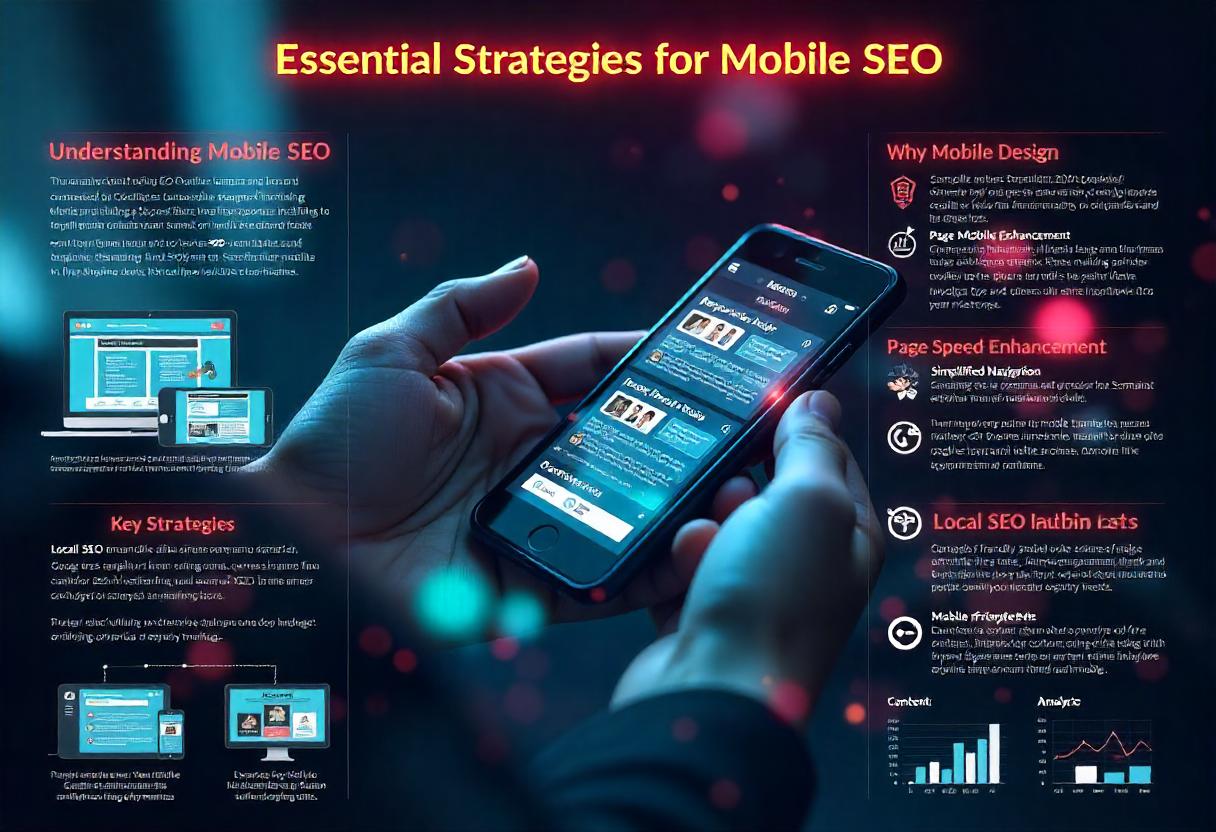In today’s world, mobile devices are the most popular ways to connect to the internet. With more than half of all web traffic now coming from mobile devices, it is no longer a choice but a necessity to optimize your website for mobile. Mobile SEO is the process of improving your site’s viewability and user experience on mobile so as to stay competitive in this mobile-first world. Here is a basic guide on how to achieve some of the essential strategies and best practices for optimizing your site for mobile SEO:
Understanding Mobile SEO
Essentially, mobile SEO is the fine-tuning of your website to work seamlessly on a mobile. It promises fast loading, easy navigation, and smooth usability on whatever smartphone and/or tablet one might be using. With the growing trend towards handheld devices, Google and other search engines’ reliance on its use makes mobile SEO a need in order to generate organic traffic.
Why Mobile SEO Matters
- Increased Mobile Usage: More and more users are viewing your page on their phone compared to ever before. Not optimizing for mobile will lead to losing a huge portion of your audience.
- Google’s Mobile-First Indexing: It started mobile-first indexing—that is, it indexes using the mobile version of a website and primarily ranks a site by its mobile version. A website that is not mobile-friendly will lose ranking because of this algorithmic shift.
- The Improved User Experience: A mobile-optimized site always enhances the user experience to result in less bounce rates and more engagement. Users will remain on a site that is easy to navigate, loads easily on the device being used.
- Higher Conversion Rates: Optimizing for mobile should also result in higher conversion rates. An effective mobile experience encourages users to take such action as making a purchase or filling out a form.
Key strategies in mobile SEO
- Responsive Design
Responsive web design is probably one of the most effective techniques to optimize your site for a mobile audience. This is because it will automatically adapt the layout and content of the pages based on screen size, making it a very user-friendly solution across various devices, cutting down on the requirement for different sites on a mobile and desktop platform. - Page Speed Enhancement
Mobile users expect fast-loading pages. Slow-loading sites can lead to high bounce rates. To improve page speed:- Compress Images: Use WebP or other such image formats, reducing file size.
- Minimize HTTP Requests: Decrease the amount of elements on each page.
- Use browser caching: Cache some information at the clients’ browsers to speed up for repeat visitors.
- Leverage Content Delivery Networks (CDNs): CDNs can distribute your content closer to users, reducing load times.
- Simplify Navigability
Mobile screens have limited space, so it’s essential to simplify navigation. Here are some tips:- Use a Hamburger Menu: This saves space but gives easy access to sections of the website.
- Prioritize Important Links: Place the most important links at the top for easy access.
- Limit drop-down menus: These can get very messy on mobile; consider a single-column layout.
- Optimize for Local SEO
Local SEO is an important aspect in many mobile users’ search. To optimize for local search:- Use location-specific keywords. Add more local words for use in content, title tags, and meta descriptions.
- Claim Google My Business Listing: Ensure accuracy of data and update it periodically.
- Activate customer reviews: It undoubtedly improves your rank in the search results.
- Use mobile-friendly formats.
- Content Formats
Some content formats are best consumable on a mobile device. Consider these:- Shorter Content: Break a long paragraph and use bullet points for better readability.
- Video Content: Video also works very nicely in mobile. Think about including relevant videos to the content too.
- Large Call-to-Action Buttons: Ensure buttons are easily clickable with a finger, avoiding frustration for users.
- Mobile-Friendly Test
Regularly test your site for mobile compatibility. Use tools like Google’s Mobile-Friendly Test to identify issues and ensure your site is optimized for mobile users. - Performance Check
Keep tabs on mobile performance with analytics tools. Monitor the bounce rate, average session duration, and conversion rate to measure the extent to which your mobile SEO efforts are paying off.
FAQs on Mobile SEO
- What is mobile SEO?
Mobile SEO is the optimization of a website such that it runs perfectly on a mobile device, improve speed for pages and navigation elements, and finally user experience for more screen time in mobile search results. - How do I make sure my site is mobile friendly?
You can use Google’s Mobile-Friendly Test tool, where the test returns a report on the mobile-friendliness of your website and what needs to be improved. - Does mobile SEO impact desktop rankings?
Furthermore, mobile SEO is more about user experience from the mobile; however, its provisions would further improve desktop rankings due to Google’s approach that concentrates on optimizing user experience in all devices.
Conclusion
With the mobile-first world today, getting a mobile SEO optimization is the only way to keep ahead of others and get organic traffic. You can improve the performance of your website on mobile with responsive design, improvement of page speed, simplification of navigation, and local SEO. Let’s know the performance of your site on mobile and keep changing your tactics according to your needs to make for a really smooth interaction with your users. By prioritizing mobile SEO, you’ll position your website for success in an increasingly mobile-centric online landscape.

